 THE IMPACT OF A VIDEO INTERVENTION ON THE USE OF LOW VISION ASSISTIVE DEVICES
THE IMPACT OF A VIDEO INTERVENTION ON THE USE OF LOW VISION ASSISTIVE DEVICES
Introduction
The National Eye Institute has defined low vision as a visual impairment, not correctable by standard glasses, contact lenses, medicine, or surgery that interferes with a person’s ability to perform everyday activities. Age-related macular degeneration (AMD) is the second most common eye disorder in late life, is the leading cause of (legal) blindness among European-descended people older than 65 years and is the leading cause of blindness among white persons (54.4% of the cases). Except for preliminary findings regarding the effectiveness of nutritional supplements, there is no known effective treatment for the dry type of macular degeneration, thus the vast majority of people with this condition must learn to adapt to the limitations associated with central vision loss. The treatments for the wet type only slow the progression of the disease or provide small improvement. Thus eventually all AMD patients have to deal with a significant vision loss. The prevalence is strongly associated with age and thus is expected to increase with the aging of the population. The impact on physical and economic status and quality of life can be severe. For example, low vision is likely to affect the ability to perform job-related functions (such as reading and writing) that in turn may lead to a loss of income. According to the Bureau of Labor Statistics, in 2004, 21.9% of people of ages 65–74 were still employed. Further, central retinal vision loss (as is common in AMD) may impact mobility (particularly on driving), which limit the patient’s ability to participate in valued social or leisure activities, and to maintain functional independence.
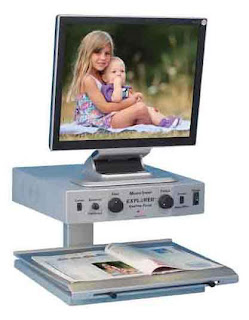
When diagnosed with an incurable vision disorder such as age-related macular degeneration (AMD), many patients report feeling devastated. The emotional consequences of the disability caused by the vision impairment can be severe – including grief, depression, anxiety, confusion, fear, and suicide ideation. While many rehabilitative services and assistive options exist, many patients do not take advantage of them. It is commonly believed that this is because they are not informed by the diagnosing provider about the availability of these services or how to access them. A 1997 survey commissioned by the National Eye Institute (NEI) seems to support that view reporting that, “most respondents said that their eye care professional provided little to no medical information about their vision problems and no information about how to cope with their conditions or diagnoses.” In addition, many respondents thought that their eye care professionals were too busy and did not have the time to explain much to them. Several ophthalmologists told patients that “they could do nothing more for them.” Consequently, they stopped visiting any eye care professional, not realizing that visual aids or other rehabilitative services were available. Although the public awareness of AMD may have slightly increased since 1997, it is not clear whether public awareness of potential rehabilitation options has increased as well. A study in
Thus, the current state of low vision patient education and the availability of patient education materials is alarmingly suboptimal. Recognition of this situation led the National Eye Health Education Program (NEHEP), to develop a nationwide educational program about low vision and its rehabilitation including collaborative community health education initiatives, sponsorship of public service announcements, extensive publications, and a traveling display for presentation in shopping malls. In complement to these efforts we developed, with funding from the National Eye Institute, an educational video; Hope in Sight: Living with Macular Degeneration. The video aims to address the educational, emotional, motivational needs associated with living with low vision due to AMD. The video uses a cognitive restructuring approach that aims to instill adaptive beliefs prior to attempting changes in actual behavior. The specific learning objectives of the video were to improve knowledge of: 1) anatomy of the eye and pathology of AMD; 2) types of rehabilitative devices available; 3) simple adaptive environmental changes to consider; 4) lifestyle changes; and 5) resources for information, services and devices. The motivational objectives were to increase the patient’s self-efficacy in regard to obtaining and using assistive devices and encourage the use of rehabilitation resources, aids, and devices.

Discussion
General knowledge of eye diseases has been demonstrated to be poor, even when patients are diagnosed with the disease. A few studies have shown that predictors of knowledge of eye diseases are sex (female), education level, English spoken in the home and recent visit to the eye doctor. In at least 2 studies, education and outreach has been effective in improving knowledge, care, and rate of eye examinations.
The National Eye Institute has concluded that education is important and has set up an independent arm (NEHEP) to promote knowledge and training. The cost of education is miniscule compared to the costs incurred by blind individuals. However, clinicians in the primary care settings generally lack the training, resources and time to perform all the elements of even the basic eye examination much less conduct teaching sessions for their patients.
The video we developed was found to have a significant impact on the proximal outcomes (knowledge and willingness to use assistive devices). People who lived alone scored significantly worse at baseline than those who did not live alone, but the magnitude of this difference is small. At the 2-week interview, there was no significant difference between those who lived alone and those who didn’t. This suggests that people who live alone are a particularly good target for the educational intervention. Adults with low vision who lived with another person (spouse or other) may in effect have a living assistive device, and thus be less reliant on devices and appliances compared to those who live alone. A sighted companion may provide motivation and reinforcement to incorporate these changes and also provide greater access to information about these devices.
Researchers have used video as an intervention or part of an intervention to influence attitudes related to falling, to decrease cancer fatalism, improve HIV risk reduction, and to improve parent knowledge about antibiotics. In all but one of these studies, the benefits in attitudinal, behavioral and knowledge outcomes were modest or the same compared to an alternative intervention. We interpret these results to be positive considering that the distribution of a video is generally less costly than the alternative interventions. The fact that there was little detectable impact on actual behavior and on emotional affect during this three-month study period despite a significant impact on knowledge was disappointing. This does not minimize the importance of patient education; it just emphasizes how hard it is to cause a change. This failure could be because of an inability of the measures used to find a difference or alternatively because there was no difference. The adaptive behavior questions (questions E1 through E10 in the questionnaires in the on-line appendix) probed changes in behavior, but did not address the reasons for the behavior change. For example, a change in kitchen appliances might be to acquire a talking device (a positive change), or the change might be to discard, because of vision, a no longer usable product (a negative change). Thus, if the intervention group made positive changes, but the control group made negative changes, our questions would be unable to distinguish between them. The self-efficacy questions (F1 through F9) were very specific and addressed the participant’s confidence and thus did not suffer from this limitation.
It is important to note that the effect on knowledge was found even though the participants were recruited at a seminar in which they already acquired some basic knowledge of the disease and the rehabilitation before the baseline evaluation. A change in distal outcomes, like the purchase and use of assistive devices might require a more intense intervention or may require more time to materialize. Access to care may have been a confounding issue, because in many locations a waiting period of three months or longer for an appointment with a low vision rehabilitation specialist is not unusual. However, it is possible that the lack of knowledge is not as much of a contributing factor as we and others have assumed. It is possible that other factors identified at the NEI focus groups[National Eye Institute, 2001 #42] such as cost of devices, lack of motivation and limited access to transportation have limited the impact of the acquired knowledge.

Several limitations of the study are acknowledged. First, the recruitment strategy of targeting attendees to a low vision related educational event may have resulted in a sample that was healthier and more independent than one accessed from a clinical setting. The event itself may have served a similar purpose as the video thus reducing its effect (however as noted above we still had a significant improvement in knowledge suggesting that the video was a more effective tool). If the sample was indeed positively skewed, then the impact of the intervention on adults with low vision may have been underestimated. Second, the sample was not ethnically or racially diverse (e.g., 96% non-Hispanic white) and thus not generalizable to the population of older adults. However, epidemiological studies suggest that the prevalence of AMD is higher in whites.
Other methods of teaching patients about AMD are possible. These include hearing about options directly from an ophthalmologist or optometrist face-to-face, and possibly holding and using the recommended devices. However these methods are much more time consuming, expensive and difficult to implement than an educational video. We feel that because of the uniformly high levels of satisfaction reported by viewers, the ease of administration and improvement in knowledge measured, that the video is a useful patient education tool. It is however, necessary to reexamine the basic assumption that education (at least in this format) is an effective tool to change behavior. The impact of other barriers to vision rehabilitation needs to be assessed as well.
As we found, getting a distribution channel that will place such a video at the hands of the intended target population is not an easy task. We believe that the most effective distribution will be at ophthalmology or optometry clinics. We are still looking for a way to affect such distribution even at a small scale.
Conclusions
The video had small, but statistically significant impact on knowledge and willingness to use assistive devices. There was little impact on adaptive behaviors and emotional affect. The minimal changes in outcome were disappointing, but this does not minimize the importance of patient education, it just emphasizes how hard it is to effect change.

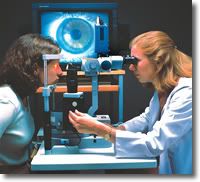
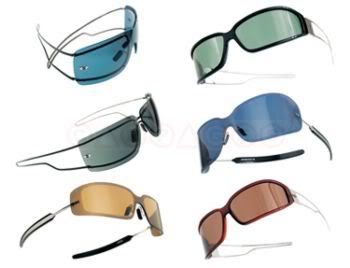
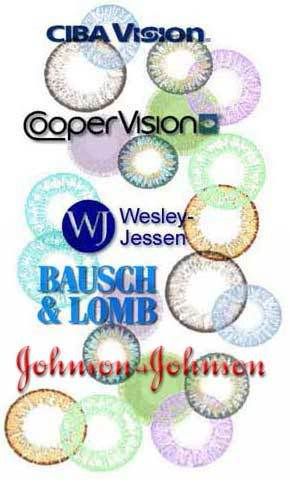
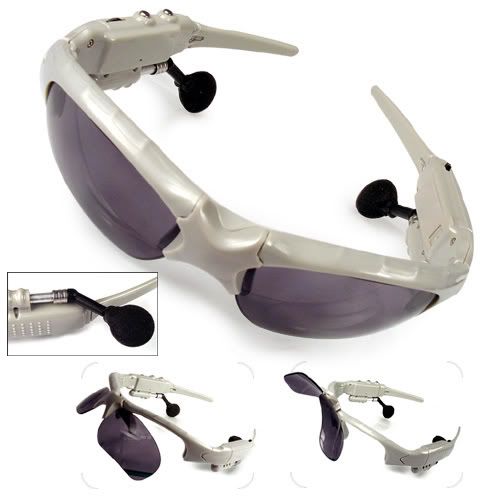
No comments:
Post a Comment